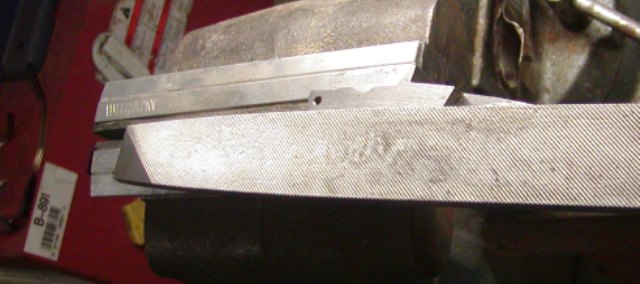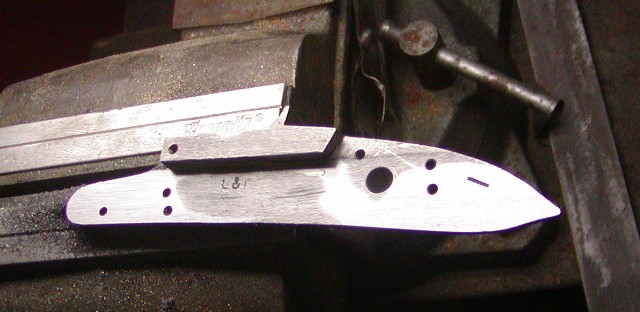Larks
40 Cal
I’ve been endeavouring to build the TRS Baker Rifle flintlock from the parts kit that they provide and am really struggling with it. I don’t have anything like a mill or any fine/accurate metal working equipment so have been attempting this with hand files, a Dremel, my large floor standing pedestal drill press and a lot of emery paper......
I have made quite a few mistakes along the way so you will see a few things in my photos and video that don’t look as pretty as they should, but I don’t think any of them are contributing to the latest two problems that I’m hung up on:
Number one is that the mainspring seems to be getting hung up on the tumbler as the tumbler roles forward, not always but four out off five times. Before I go taking any more metal off of anything (like the tail end of the mainspring where it seems to be hooking up between the “axle” (??) and the “toe”/“ear” - I don’t know the correct names but hope you might be able to understand??) is this likely due to the rounded end of the mainspring being a smidgen too long or could it be something else?
Number two may be two different things: I can’t feel a half cock as I pull the cock back, other than where the sear engages the fly just before the full cock. There is a notch forward of the full cock that I assume is the half cock and the sear would engage if the fly wasn’t in place but the fly seems to cover that notch.
I gather from the TRS web site that the fly is supposed to aid in lightening the trigger but I can’t see how that is the case, can anyone explain how the fly should actually work and what its purpose is? Would I be better off leaving it out?
(I’d originally ordered a complete lock from TRS because I knew I’d need more refined tooling than I have to get this right, but unfortunately they made an error in the order and sent the kit instead. Although they then promised to send the complete lock about 12 months ago I can’t now get any response from them and they seem to have written me off, so I’m very keen to try and get this lock working properly....)
Here’s a video showing the movement that may show up something obvious to those more experienced than me (which will be anyone here)....or it may just give you a chuckle.....
I have made quite a few mistakes along the way so you will see a few things in my photos and video that don’t look as pretty as they should, but I don’t think any of them are contributing to the latest two problems that I’m hung up on:
Number one is that the mainspring seems to be getting hung up on the tumbler as the tumbler roles forward, not always but four out off five times. Before I go taking any more metal off of anything (like the tail end of the mainspring where it seems to be hooking up between the “axle” (??) and the “toe”/“ear” - I don’t know the correct names but hope you might be able to understand??) is this likely due to the rounded end of the mainspring being a smidgen too long or could it be something else?
Number two may be two different things: I can’t feel a half cock as I pull the cock back, other than where the sear engages the fly just before the full cock. There is a notch forward of the full cock that I assume is the half cock and the sear would engage if the fly wasn’t in place but the fly seems to cover that notch.
I gather from the TRS web site that the fly is supposed to aid in lightening the trigger but I can’t see how that is the case, can anyone explain how the fly should actually work and what its purpose is? Would I be better off leaving it out?
(I’d originally ordered a complete lock from TRS because I knew I’d need more refined tooling than I have to get this right, but unfortunately they made an error in the order and sent the kit instead. Although they then promised to send the complete lock about 12 months ago I can’t now get any response from them and they seem to have written me off, so I’m very keen to try and get this lock working properly....)
Here’s a video showing the movement that may show up something obvious to those more experienced than me (which will be anyone here)....or it may just give you a chuckle.....





















 .
.


